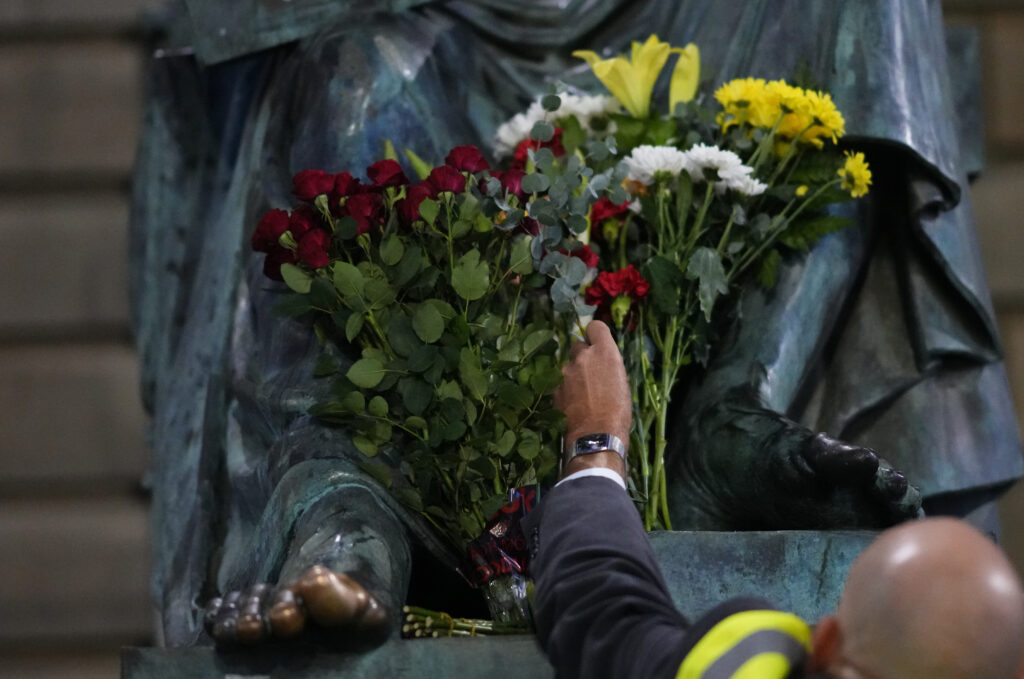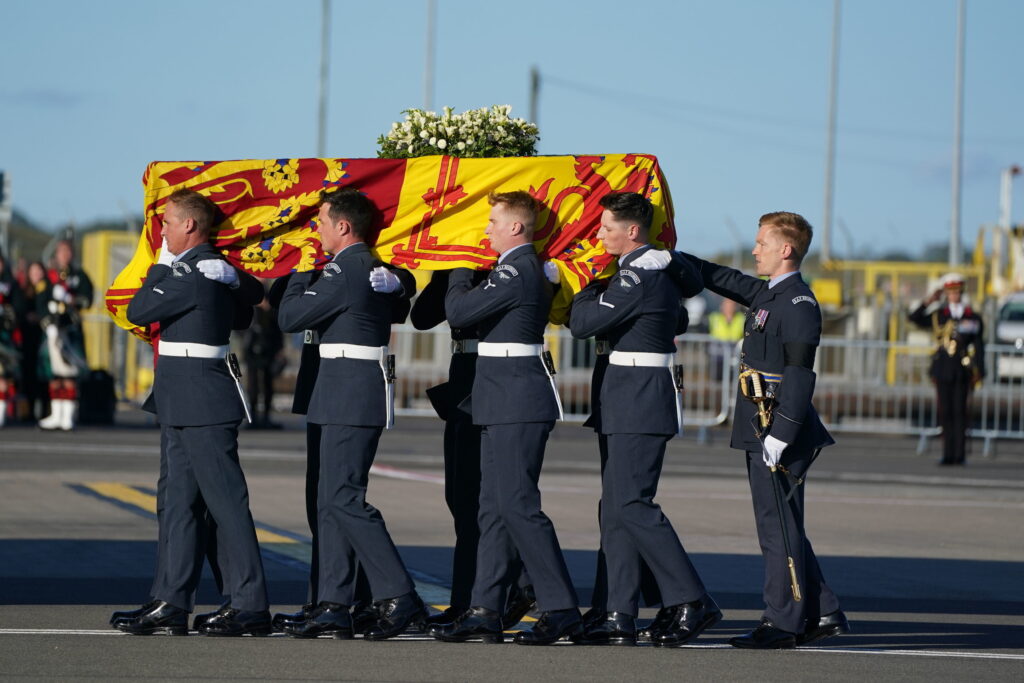Queen’s coffin leaves her beloved Scotland for London
Newslooks- EDINBURGH, Scotland (AP)
A military transport plane carrying the coffin of Queen Elizabeth II left her beloved Scotland on Tuesday for the final time to return to London, where she will lie in state.
Her son, King Charles III, also flew to London from Northern Ireland, where his visit drew a rare moment of unity from politicians in a region with a contested British and Irish identity that is deeply divided over the monarchy.
As a bagpiper played, the flag-draped oak coffin was carried from St. Giles’ Cathedral. Crowds lining the Royal Mile through the historic heart of Edinburgh broke into applause as the coffin, accompanied by the queen’s daughter, Princess Anne, was driven to Edinburgh Airport.
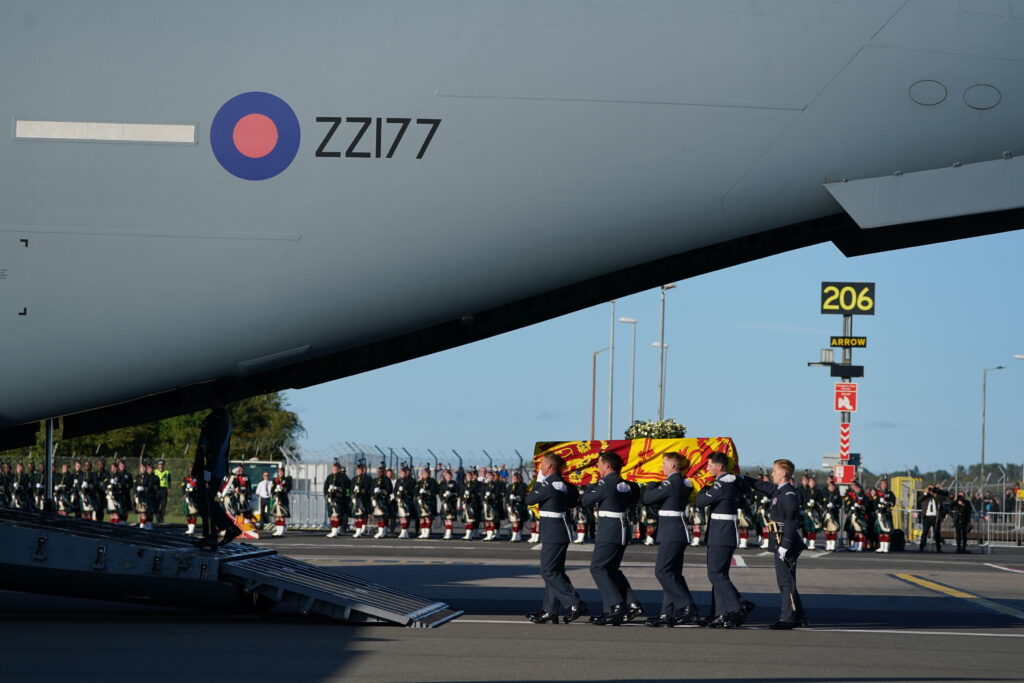
Over the past 24 hours, thousands of people filed silently past the coffin after it was brought to Edinburgh from Balmoral Estate, where she died Thursday at age 96, ending her 70-year reign.
Charles left Belfast to receive his mother’s coffin in London, where it will stay overnight at Buckingham Palace. The coffin will be taken on a horse-drawn gun carriage Wednesday to the Houses of Parliament, where it will lie in state for four days before Monday’s funeral.
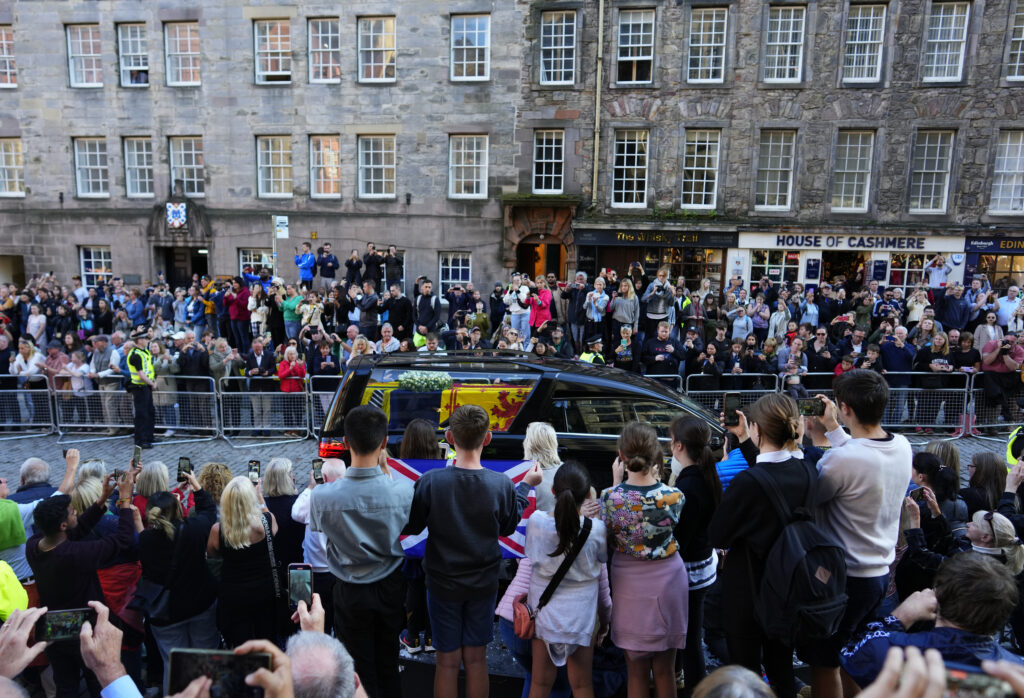
Earlier, hundreds of people lined the street leading to Hillsborough Castle near Belfast, the royal family’s official residence in Northern Ireland, in the latest outpouring of affection following the queen’s death. The area in front of the gates to the castle was carpeted with hundreds of floral tributes.
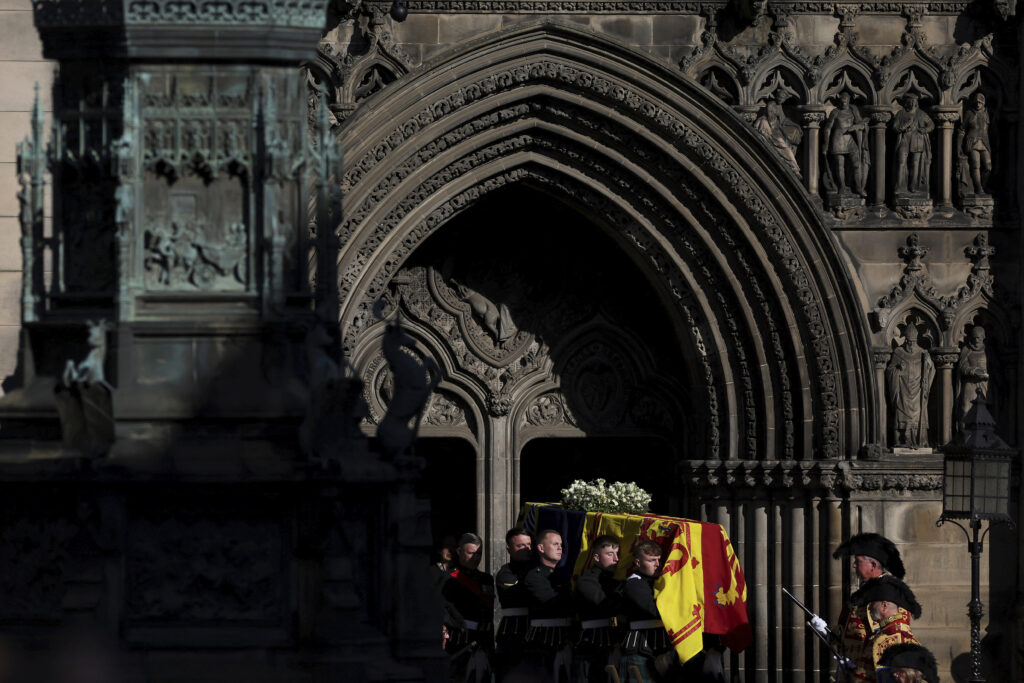
Charles and his wife Camilla, the Queen Consort, got out of their car to wave to the crowd and sometimes used both hands to reach out to villagers, including schoolchildren in bright blue uniforms. Charles even petted a corgi — famously his late mother’s favorite breed of dog — held up by one person, and some chanted “God save the king!”
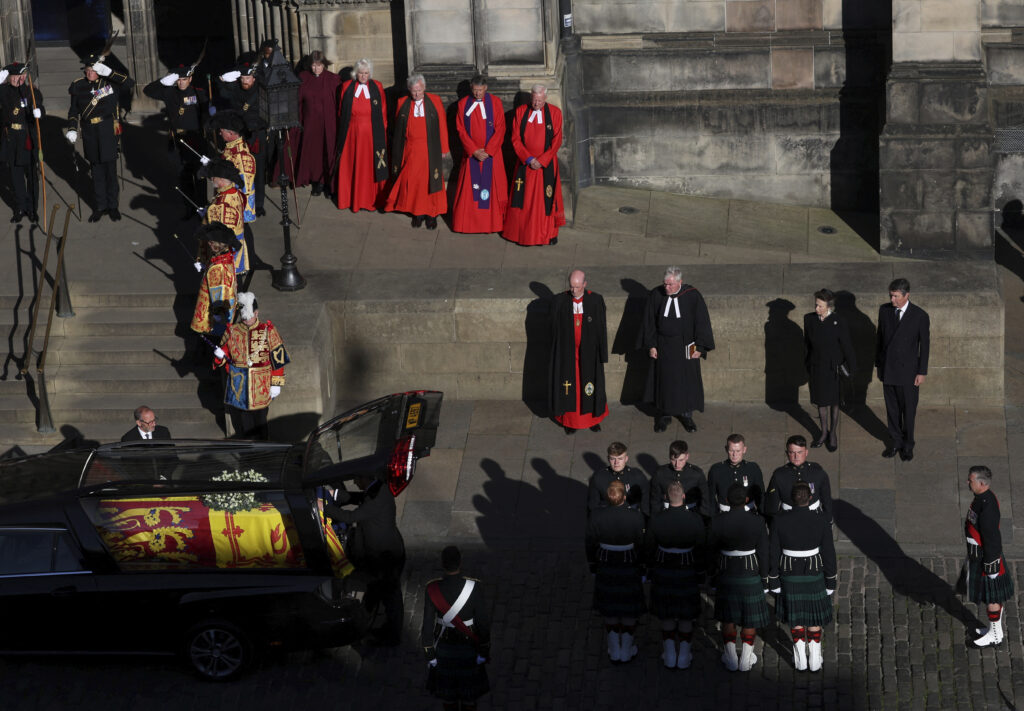
“Today means so much to me and my family, just to be present in my home village with my children to witness the arrival of the new king is a truly historic moment for us all,” said Hillsborough resident Robin Campbell as he waited for Charles, who is on a tour of the four parts of the United Kingdom.
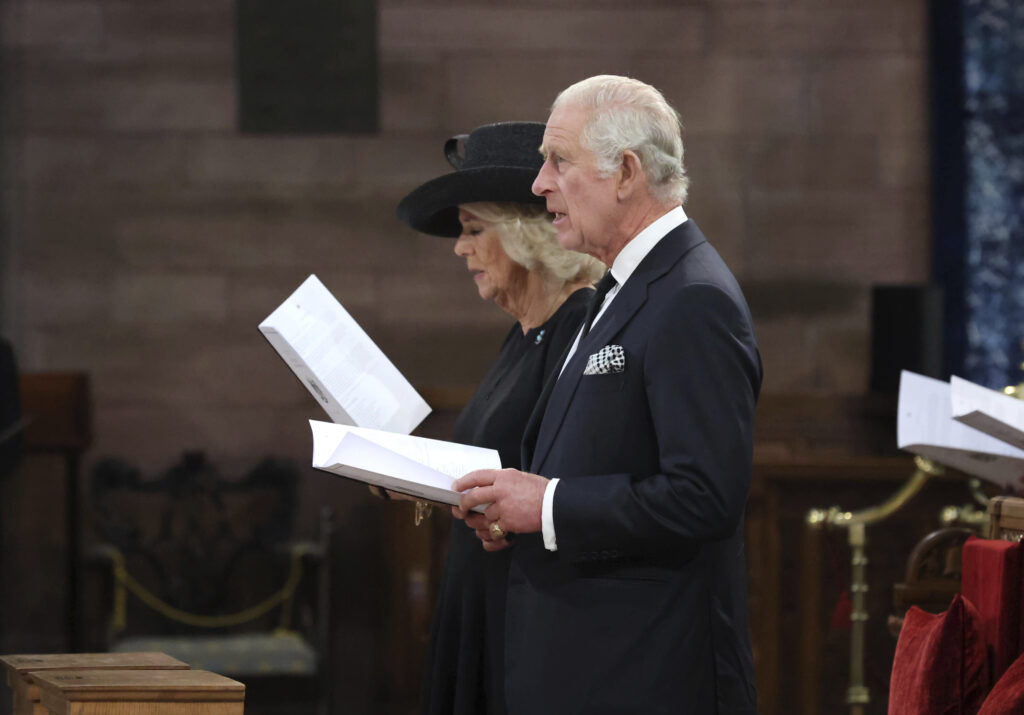
While there was a warm welcome in Hillsborough, the British monarchy draws mixed emotions in Northern Ireland, where there are two main communities: mostly Protestant unionists who consider themselves British and largely Roman Catholic nationalists who see themselves as Irish.
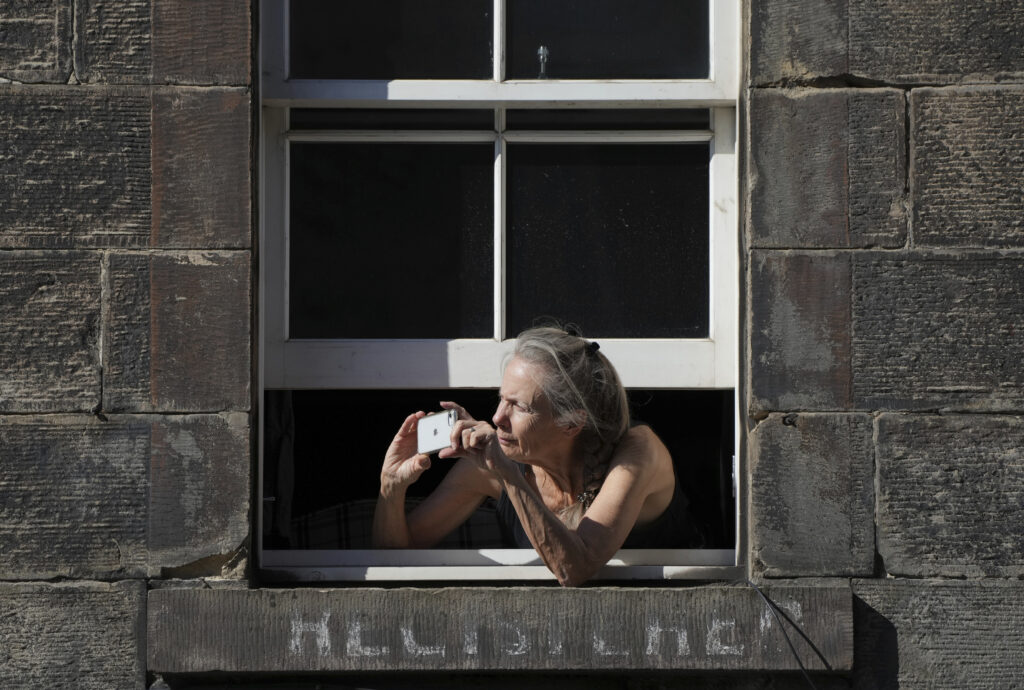
That split fueled three decades of violence known as “the Troubles” involving paramilitary groups on both sides and U.K. security forces, in which 3,600 people died. The royal family was touched personally by the violence: Lord Louis Mountbatten, a cousin of the queen and a much-loved mentor to Charles, was killed by an Irish Republican Army bomb in 1979.
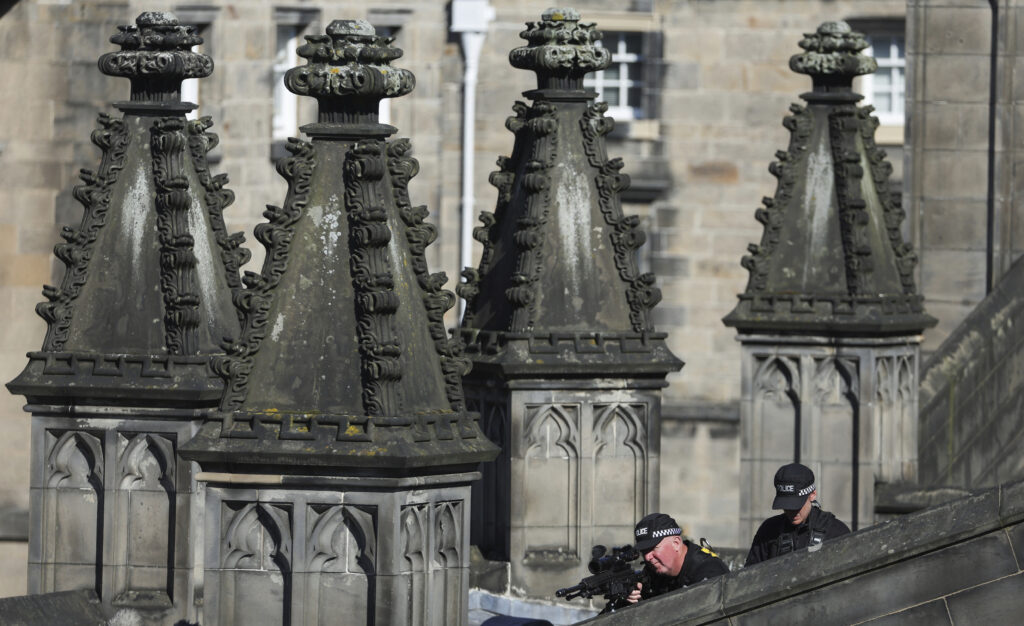
A deep sectarian divide remains, a quarter century after Northern Ireland’s 1998 peace agreement.
For some Irish nationalists, the British monarch represents an oppressive foreign power. But others acknowledge the queen’s role in forging peace. On a visit to Northern Ireland in 2012, she shook hands with Sinn Fein deputy leader Martin McGuinness, a former IRA commander – a once-unthinkable moment of reconciliation.
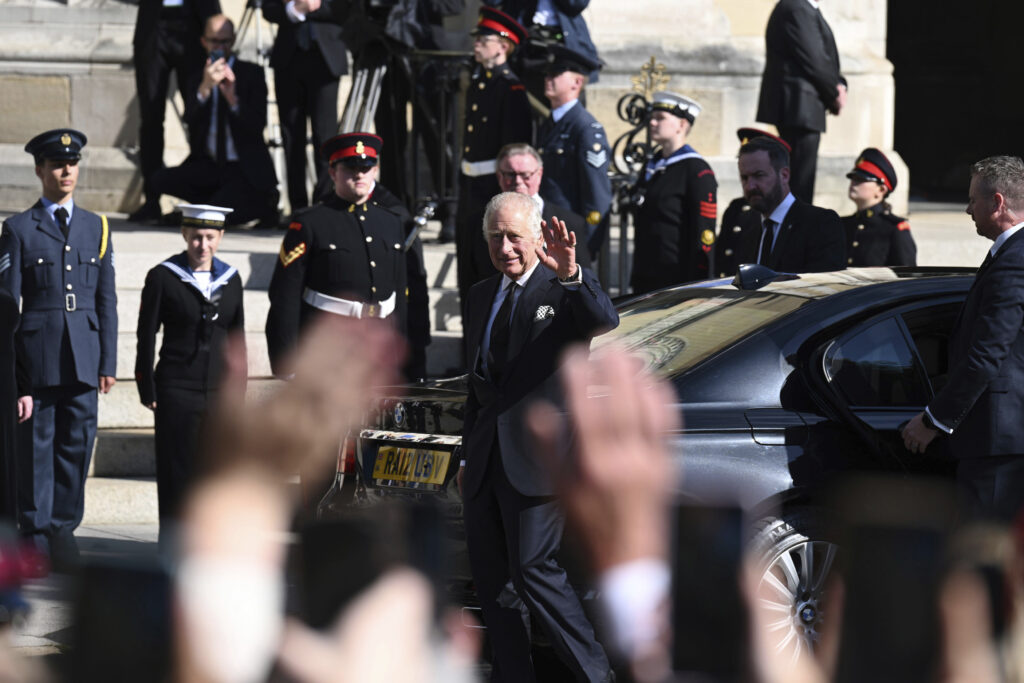
Alex Maskey, a Sinn Fein politician who is speaker of the Northern Ireland Assembly, said the queen had “demonstrated how individual acts of positive leadership can help break down barriers and encourage reconciliation.”
In a sign of how far Northern Ireland has come on the road to peace, representatives of Sinn Fein attended commemorative events for the queen and meeting the king on Tuesday.
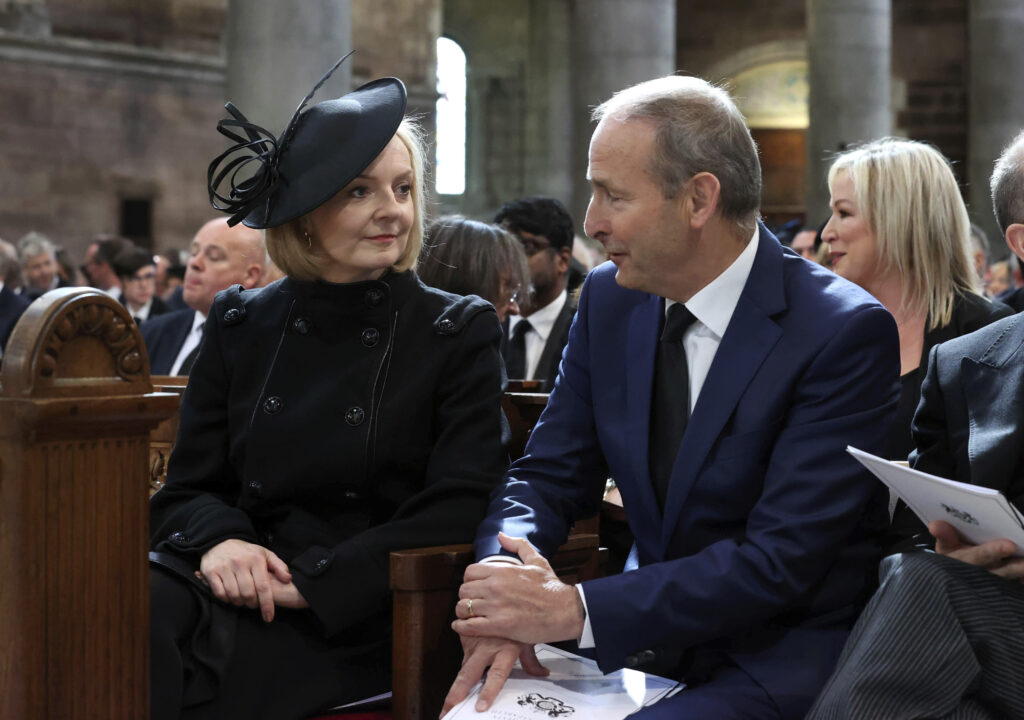
Maskey expressed condolences to the king at an event in Hillsborough Castle attended by leaders from all the main political parties in Northern Ireland.
Charles responded that his mother “felt deeply, I know, the significance of the role she herself played in bringing together those whom history had separated, and in extending a hand to make possible the healing of long-held hurts.”
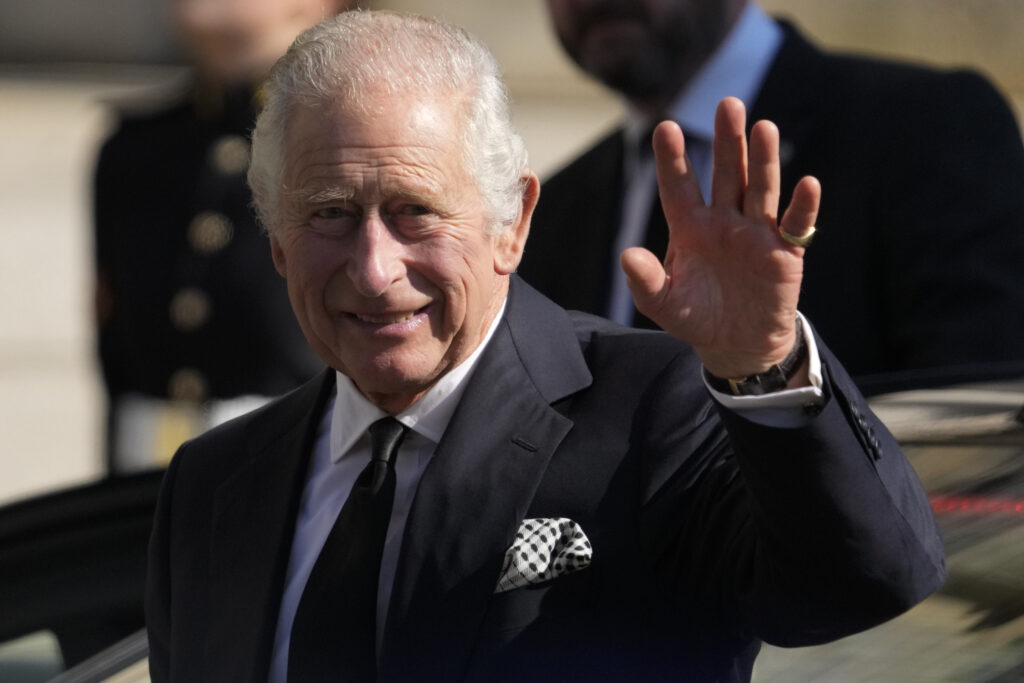
He said he would draw on his mother’s “shining example” and “seek the welfare of all the inhabitants of Northern Ireland.”
Still, not everyone was welcoming the new king.
On the Falls Road in Belfast, a nationalist stronghold, several walls are decorated with murals of Bobby Sands, an IRA member who died while on a hunger strike in prison in 1981, and others killed in the Troubles.
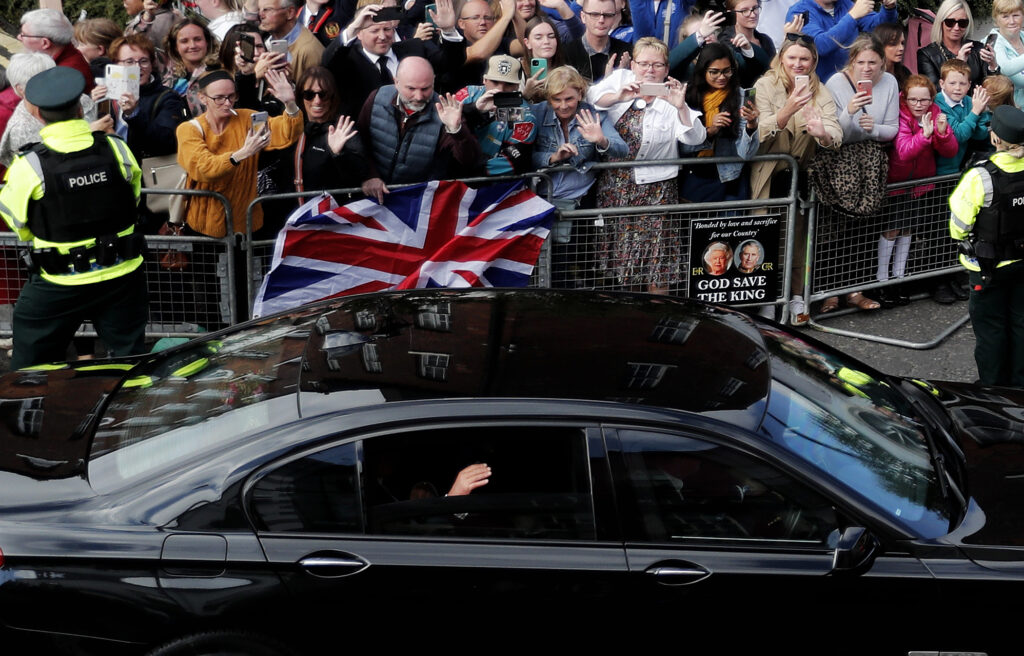
“No, he’s not our king. Bobby Sands was our king here,” said 52-year-old Bobby Jones. “Queen never done nothing for us. Never did. None of the royals do.”
Politicians from across Northern Ireland’s divides attended a memorial service for the queen in Belfast. British Prime Minister Liz Truss, her Irish counterpart Micheal Martin and Irish President Michael D. Higgins were at St. Anne’s Cathedral in the center of Belfast for the Anglican “service of reflection.”
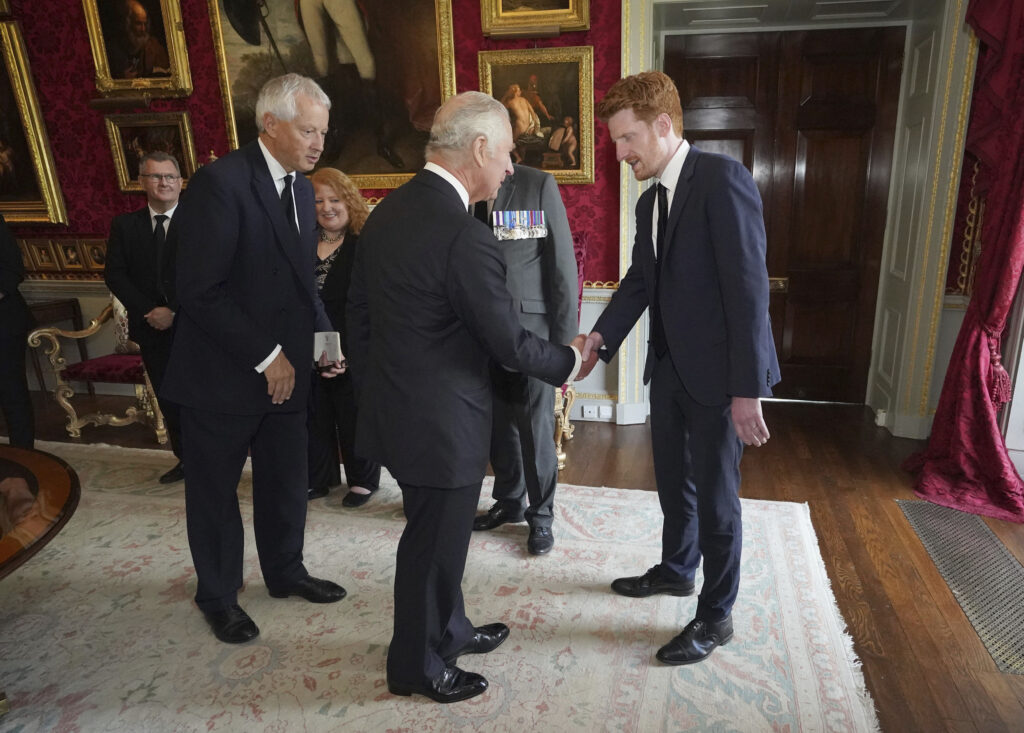
Clergy praised the queen’s role in helping bring peace to Northern Ireland. Archbishop of Armagh John McDowell said she had “walked the hard road of reconciliation.”
Irish leaders also attended despite tense relations between Dublin and London over Brexit. Since Britain left the European Union in 2020, the U.K. and the EU have been wrangling over trade rules for Northern Ireland, the only part of the U.K. that shares a border with a member of the bloc.
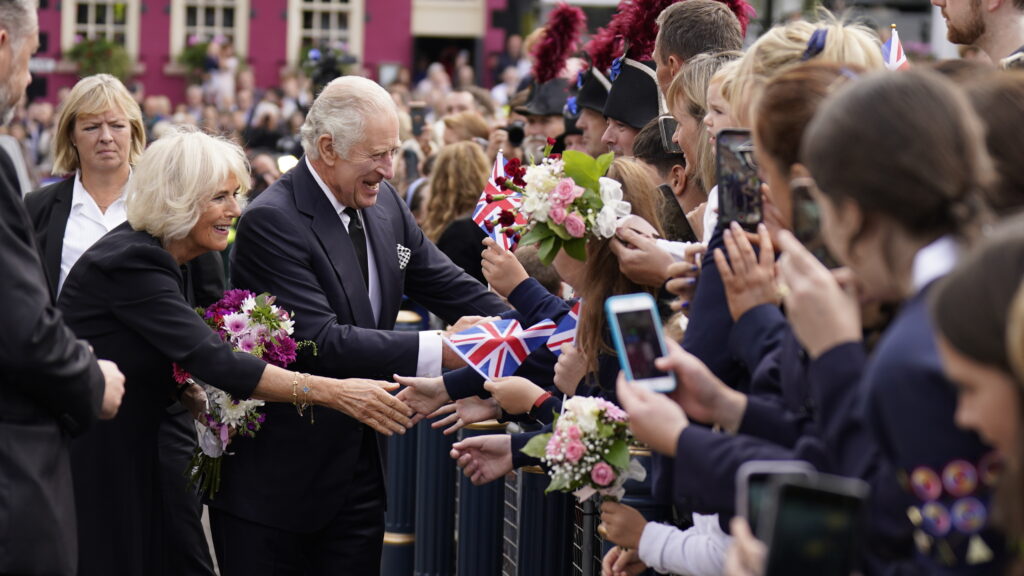
On Monday night, Charles and siblings Anne, Andrew and Edward briefly stood vigil around their mother’s flag-draped coffin at the cathedral as members of the public filed past.
The following morning, a man wearing a suit adorned with medals stood silently, bowed his head and moved on. A woman dabbed away tears with a handkerchief. Another woman with two young children in school uniforms walked slowly past the coffin.
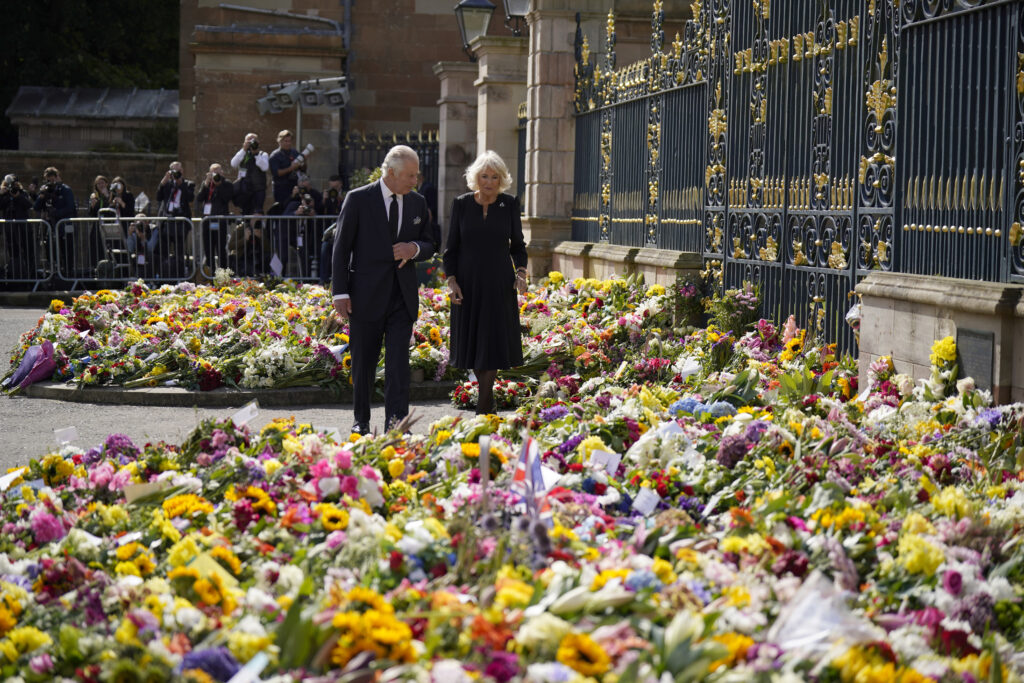
In the line of mourners outside the cathedral, Sheila McLeay called the queen “a wonderful ambassador for our country.”
“She was such an example for every single one of us. She was dignified. She was just, she was beautiful inside and out. And I have known her all of my life. And I miss her very much,” she added.
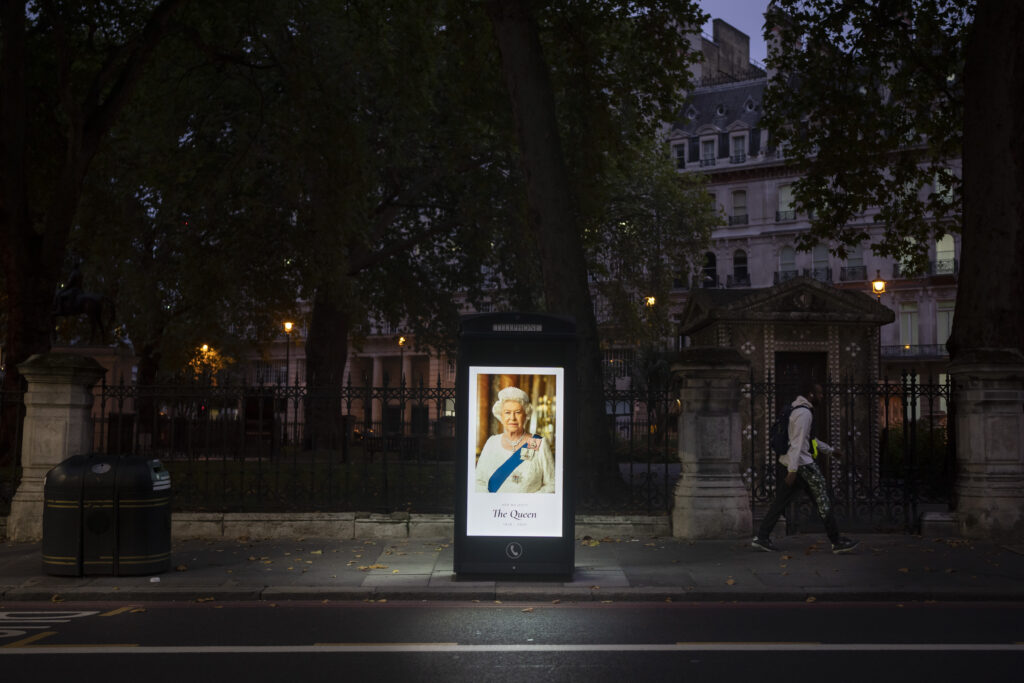
The queen’s coffin will be flown back to RAF Northolt, an air force base in London, and driven to Buckingham Palace.
The Royal Air Force C-17 Globemaster that will carry the coffin has been used to evacuate people from Afghanistan and to take humanitarian aid and weapons to Ukraine following Russia’s invasion, U.K. Air Chief Marshal Sir Mike Wigston said.
